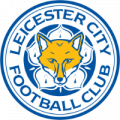It’s the ten year anniversary of Mexico winning their first U-17 World Cup. It might be hard to remember because since that time Mexico has made another three semifinals, a final, and another Championship at the U-17 level. At the same time, the U-20s four years ago finished third, and three years ago Mexico captured the Olympic Gold in the London Games which is a U-23 tournament.
Yet the Mexican youth movement started ten years ago when Mexico ran through the competition, topped off with a 3-0 win over Brazil in the finals. Patricio “El Pato” Araujo was the captain and Carlos Vela was the leading goal scorer, but the player who created, dashed, and cut threw everyone in the tournament was Giovani Dos Santos. He finished winning the silver ball as the second best player in the tournament and he gave every Tri fan something to hope for in the future. Part of the reason why isn’t just because he had a fantastic tournament, but also because at the time he was also a member of the F.C. Barcelona youth team, arguably the best youth school in the world.
His showing and promise was so high, some hoped for Ricardo La Volpe to bring Dos Santos to Germany at the 2006 World Cup if just for the experience, as at the time there was no doubt he would be the focal point and catalyst for Mexico for years to come.
It hasn't been smooth sailing for the one once dubbed the Mexican Ronaldinho. By the age of 18 he had made his first team debut for Barcelona and for Mexico. In the final game of the 2007-08 season for Barcelona he notched his first hat-trick in a 5-3 win.
After that time though, his club career has never had the same consistency. Newly appointed Tottenham Spurs coach, Juande Ramos, brought Dos Santos to England with the idea of the young Mexican (19 at the time) being one of his focal points in his attack and bring a different dimension to the English club.
After a poor start to the season, Ramos was released and Harry Redknapp was brought in. In the four years with the Spurs and under the leadership Redknapp, Dos Santos was loaned out three times. Depending on how you see it, either Redknapp never gave Dos Santos a proper run, or Dos Santos never did enough when given a chance. In reality, it was probably something in the middle. The reality was that Dos Santos wasn’t a Redknapp player and he never thought highly of Dos Santos. Yet during his loan deals with Ipswich Town, Galatasaray and Racing Santander, he shined and showed his quality.
Ipswich Town manager at the time, and Manchester United legend and captain Roy Keane had this to say about Dos Santos in his book, “What he was doing at Ipswich I do not know. He was brilliant.”
Again, this is Roy Keane we’re talking about. He is one of the most blunt, and hardest (and maybe dirtiest) men to ever play the game. The same Keane who to this day can’t get along with his former manager Sir Alex Ferguson after years of trophies and success together. If Dos Santos can make that man blush with his play, that means the talent could have been endless.
At the same time as Dos Santos was feeling the cold shoulder of Redknapp and the oddly warmth of the likes of Roy Keane, he has started to become one of the key players for Mexico, including in the 2009 Gold Cup as he helped lead Mexico to a 5-0 in the finals over the United States and started every game for Mexico a year later in the 2010 World Cup.
Playing so well he was one of the three finalists for best youth players of the tournament. A year later he put the world on notice again with his solo effort goal against the United States in the finals of the 2011 Gold Cup. He dazzled with the ball on his feet while defenders were left helpless and Tim Howard left looking like a fish flopping out of water, as he gently chipped the ball into the upper corner of the far post. A truly world class goal that again, at the age of 22, showed everyone the little extra of class Dos Santos possessed that few had.
The following summer, another part that has become as much as part of the career of Dos Santos as his erratic club career, and his spots of world class play shined, his constant ability to be hurt. While representing Mexico at the 2012 Olympics as Mexico’s only European based player, he again was having a great tournament and showed his skills. Leading the team from the attacking midfield position, he was forced to leave the semifinals with a muscle injury against Japan and was unable to recover in time for the finals in which Mexico were still able to win.
Finally, during the 2012-13 and 2013-14 seasons with Mallorca and Villarreal, it had looked like Dos Santos had finally settled his club career. After a rough 2013 all around for Mexico as they were on the brink of missing the World Cup in 2014, he also found his place. As Carlos Vela refused to return to Mexico, and Javier Hernandez struggled mightily, it was Dos Santos who entered the 2014 World Cup in great form. Playing behind the top forward as he did with Villarreal, it was his goal in the round of 16 against the Netherlands that gave Mexico a glimmer of hope in breaking their round of 16 slump.
It was the following year with Villarreal that the injury bug hit hard again, and his playing time was reduced greatly. While for Mexico, the return of Vela and the rise in quality in Hernandez saw Miguel Herrera put Dos Santos on the bench when Mexico played with two forwards. If that wasn’t enough it, another injury left him watching the 2015 Gold Cup from the bench as Mexico went on to win the tournament.
During this time was when rumors were rolling around that the L.A. Galaxy were interested in bringing him in. The rumors turned true as Dos Santos made the move a reality. On the surface this was a win for everyone. Dos Santos got a big pay day and the MLS was able to tap into the market that they’ve stumbled for so long to reach in the Mexican market. Chivas U.S.A. never attracted the Mexican community the way they hopped, while Cuauhltemoc Blanco had success for Chicago Fires, he was never marketable in the way the MLS hoped as he was loved as much as he was hated by Mexicans for his club career with Club America. Also, Rafael Marquez was never going to turn out well in MLS as no matter the talent, good looks and trophies he had won with Barcelona, he had become public enemy number one to the American soccer fan for his red cards against the United States as Mexican captain.
Dos Santos was neither. He had never played in Mexico and was never someone who embraced the hate like Blanco. He has never had a mean streak like Marquez, and as an attacking midfielder, had gained respect by his skill (see 2011 Gold Cup goal again) that people admired. At 26, the MLS now has their Mexican marketing machine for years to come, as fans have come in droves to see him. While Dos Santos gets to be the face of a league with the likes of Andre Pirlo and Steven Gerrard, something that he would never get with Mexico as Hernandez is still the Mexican golden boy.
So while Dos Santos has enjoyed his time in the MLS as much as the MLS has enjoyed him, here is where the problem lies. He’s yet to play for Mexico since that time. Ricardo Ferretti dropped him in the September friendlies and those injuries came back in October as he was forced to leave the team before the CONACAF Cup in October. New coach Juan Carlos Osorio also decided not to call him, stating it was a combination of feeling Dos Santos isn’t fully healthy and doesn’t see a spot for him on the field currently. With his MLS season over, Dos Santos has a problem at hand. The next set of games for Mexico is in March, before the MLS season is in full swing. If he doesn’t go on loan he will be going on close to five months without playing a competitive game.
The other problem is that there are players who play similar positions as Dos Santos who are playing at the moment and against a higher level of competition than the MLS. Carlos Vela at his best is a better and more complete second forward than Giovani Dos Santos, while 22-year-old Jesus Corona has continued his rise in European soccer with Porto and has the ability to play in the attacking midfielder position and as a wing.
Unlike players like Hernandez and Andres Guardado, who both have gone through their struggles in Europe to only find the right fit for them now, Dos Santos decided to leave and come to the MLS. It’s only been a few months so we won’t know if it was the right move in the long run. But with a country at his finger tips and playing for one of the best teams in the world a decade ago, at 26, Giovani Dos Santos is in the middle between a rock and a Galaxy far far away from that.










































